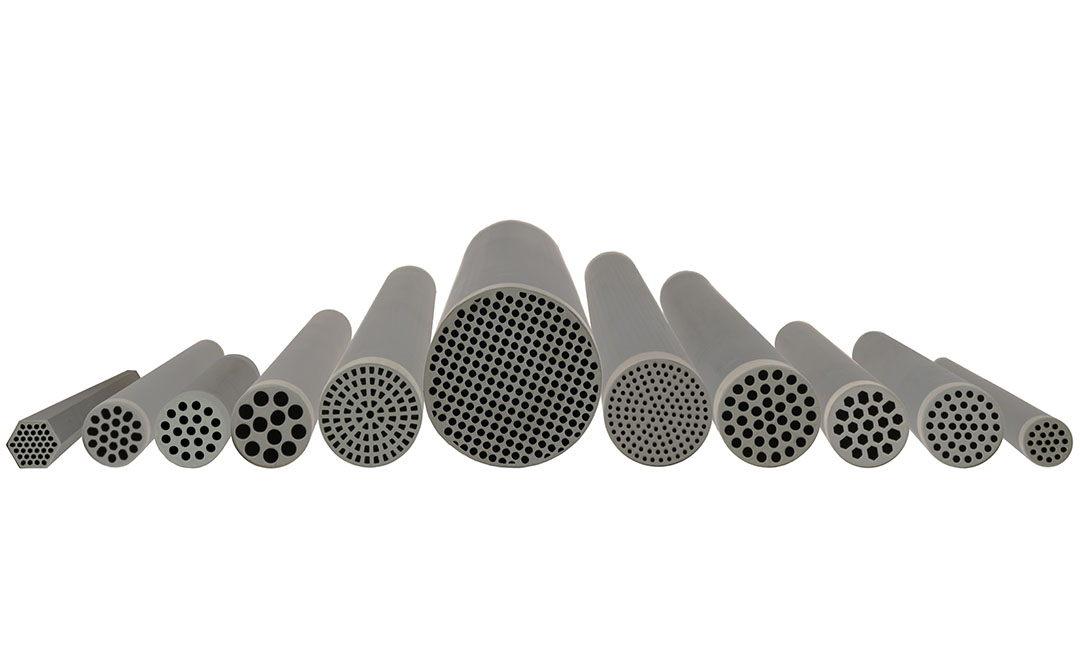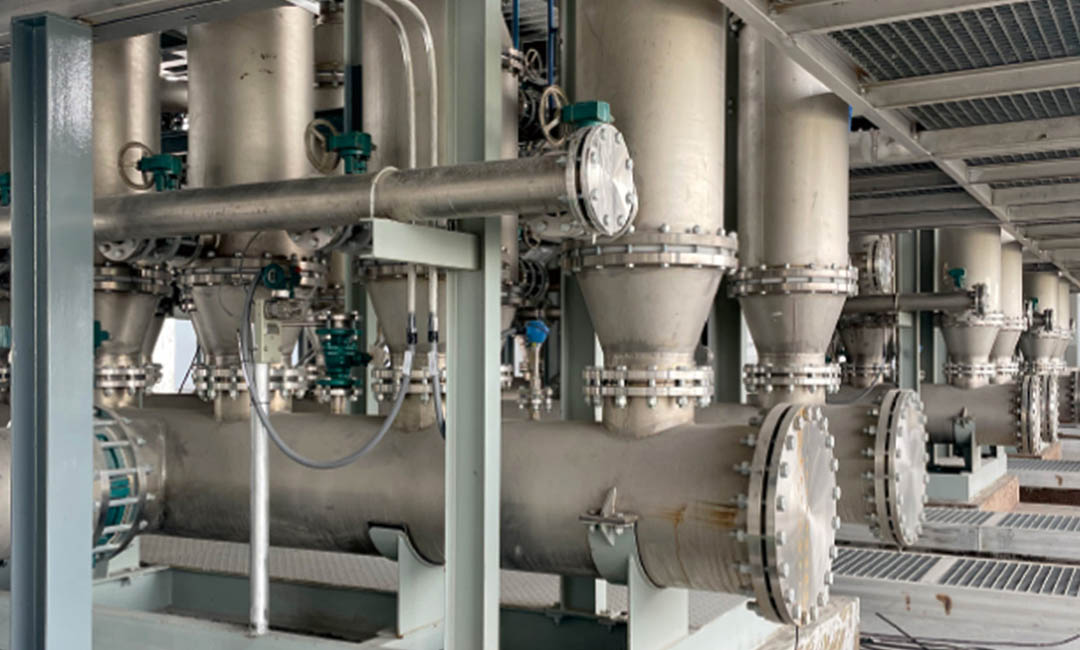Benefits of Using High-Temperature SiC Membranes in Aerospace Applications
High-temperature silicon carbide (SiC) membranes have gained significant attention in recent years due to their exceptional properties and performance in extreme conditions. These membranes have a wide range of applications, particularly in the aerospace industry, where they play a crucial role in ensuring the safety and efficiency of various systems and components.
One of the key benefits of using high-temperature SiC membranes in aerospace applications is their ability to withstand extreme temperatures. SiC membranes can operate at temperatures exceeding 1000°C, making them ideal for use in high-temperature environments such as aircraft engines and exhaust systems. This high-temperature resistance ensures that the membranes can maintain their structural integrity and performance even under the most demanding conditions.
In addition to their high-temperature resistance, SiC membranes also exhibit excellent chemical resistance. This property is particularly important in aerospace applications, where exposure to corrosive chemicals and gases is common. The chemical resistance of SiC membranes ensures that they can withstand the harsh conditions present in aerospace environments without degrading or losing their functionality.
Furthermore, high-temperature SiC membranes have a high mechanical strength, making them highly durable and reliable. This mechanical strength allows the membranes to withstand high pressures and forces, making them suitable for use in critical aerospace systems such as fuel delivery systems and hydraulic systems. The durability of SiC membranes ensures that they can perform effectively over an extended period, reducing the need for frequent maintenance and replacement.
Another advantage of using high-temperature SiC membranes in aerospace applications is their lightweight nature. SiC membranes are significantly lighter than traditional materials such as metals, making them ideal for use in weight-sensitive aerospace components. The lightweight nature of SiC membranes helps to reduce the overall weight of aircraft, leading to improved fuel efficiency and performance.
Moreover, high-temperature SiC membranes have excellent thermal conductivity, allowing them to efficiently transfer heat away from critical components. This property is essential in aerospace applications, where thermal management is crucial to prevent overheating and ensure the proper functioning of systems. The high thermal conductivity of SiC membranes helps to dissipate heat effectively, maintaining optimal operating temperatures and prolonging the lifespan of aerospace components.
In conclusion, the benefits of using high-temperature SiC membranes in aerospace applications are numerous and significant. From their high-temperature resistance and chemical resistance to their mechanical strength and lightweight nature, SiC membranes offer a range of advantages that make them ideal for use in extreme conditions. By incorporating SiC membranes into aerospace systems and components, manufacturers can enhance the safety, efficiency, and reliability of their products, ultimately leading to improved performance and reduced maintenance costs. As technology continues to advance, high-temperature SiC membranes are likely to play an increasingly important role in shaping the future of aerospace engineering.
High-Temperature SiC Membranes for Harsh Industrial Environments
High-temperature silicon carbide (SiC) membranes have emerged as a promising solution for various industrial applications that require high performance in extreme conditions. These membranes are known for their exceptional thermal stability, chemical resistance, and mechanical strength, making them ideal for use in harsh environments where traditional materials may fail.
One of the key applications of high-temperature SiC membranes is in the field of gas separation. These membranes can effectively separate gases based on their molecular size and shape, allowing for the purification of gases in industrial processes such as natural gas processing, hydrogen production, and air separation. The high thermal stability of SiC membranes enables them to withstand the high temperatures and aggressive chemical environments typically encountered in these processes, ensuring long-term reliability and performance.

In addition to gas separation, high-temperature SiC membranes are also being used in liquid filtration applications. These membranes can effectively remove contaminants and impurities from liquids such as water, chemicals, and solvents, making them ideal for use in industries such as pharmaceuticals, food and beverage, and wastewater treatment. The exceptional chemical resistance of SiC membranes ensures that they can withstand the corrosive nature of many liquids, while their mechanical strength allows them to operate under high pressure conditions.

Another important application of high-temperature SiC membranes is in the field of membrane reactors. These reactors combine the benefits of membrane separation and catalytic reactions, allowing for more efficient and selective chemical processes. SiC membranes are well-suited for use in membrane reactors due to their high thermal stability, which enables them to operate at elevated temperatures required for many catalytic reactions. The chemical resistance of SiC membranes also ensures that they can withstand the harsh chemical environments present in many catalytic processes.
Furthermore, high-temperature SiC membranes are finding applications in the aerospace and defense industries. These membranes can be used in high-temperature fuel cells, where they play a crucial role in separating hydrogen from other gases to generate clean energy. The thermal stability and chemical resistance of SiC membranes make them well-suited for use in aerospace applications, where reliability and performance under extreme conditions are paramount.
Overall, the applications of high-temperature SiC membranes in extreme conditions are vast and diverse, ranging from gas separation and liquid filtration to membrane reactors and aerospace technologies. The unique combination of thermal stability, chemical resistance, and mechanical strength offered by SiC membranes make them an attractive choice for industries that operate in harsh environments. As research and development in this field continue to advance, we can expect to see even more innovative applications of high-temperature SiC membranes in the future.
Potential Applications of High-Temperature SiC Membranes in Energy Production
Silicon carbide (SiC) membranes have gained significant attention in recent years due to their unique properties that make them suitable for use in extreme conditions. One of the potential applications of high-temperature SiC membranes is in energy production. These membranes have the ability to withstand high temperatures, corrosive environments, and harsh operating conditions, making them ideal for use in various energy production processes.
One of the key applications of high-temperature SiC membranes in energy production is in the field of hydrogen production. SiC membranes can be used in high-temperature steam methane reforming (SMR) processes to separate hydrogen from other gases such as carbon monoxide and carbon dioxide. The high thermal stability and chemical resistance of SiC membranes make them well-suited for this application, as they can withstand the high temperatures and corrosive environments present in SMR processes.
Another potential application of high-temperature SiC membranes in energy production is in the field of carbon capture and storage (CCS). SiC membranes can be used to separate carbon dioxide from flue gases emitted by power plants and industrial facilities, allowing for the capture and storage of carbon dioxide to reduce greenhouse gas emissions. The high selectivity and permeability of SiC membranes make them an attractive option for CCS applications, as they can effectively separate carbon dioxide from other gases at high temperatures.
In addition to hydrogen production and carbon capture, high-temperature SiC membranes can also be used in other energy production processes such as gas separation and purification. SiC membranes can be used to separate and purify gases such as hydrogen, oxygen, and nitrogen in various industrial applications, including gas processing, petrochemical production, and natural gas purification. The high temperature resistance and chemical stability of SiC membranes make them well-suited for these applications, as they can withstand the harsh operating conditions present in gas separation processes.
Furthermore, high-temperature SiC membranes can also be used in the field of fuel cells for energy production. SiC membranes can be used to separate hydrogen from other gases in fuel cell systems, allowing for the efficient production of electricity through electrochemical reactions. The high thermal stability and chemical resistance of SiC membranes make them an ideal choice for use in fuel cell applications, as they can withstand the high temperatures and corrosive environments present in fuel cell systems.
Overall, the potential applications of high-temperature SiC membranes in energy production are vast and varied. From hydrogen production and carbon capture to gas separation and fuel cells, SiC membranes offer a versatile and reliable solution for use in extreme conditions. With their unique properties and ability to withstand high temperatures and corrosive environments, SiC membranes are poised to play a key role in the future of energy production.

